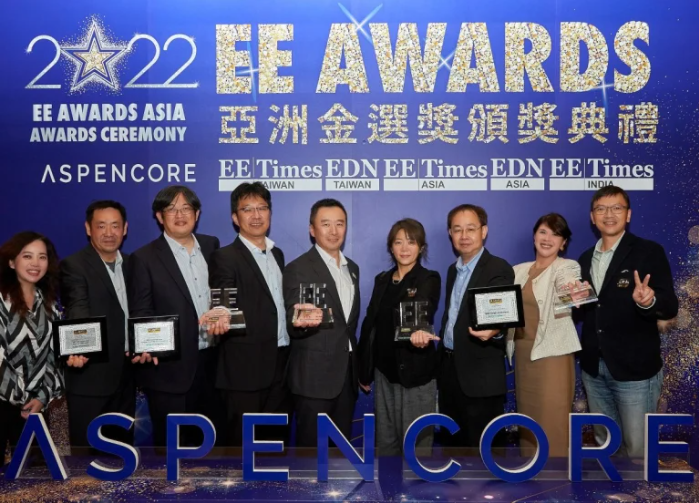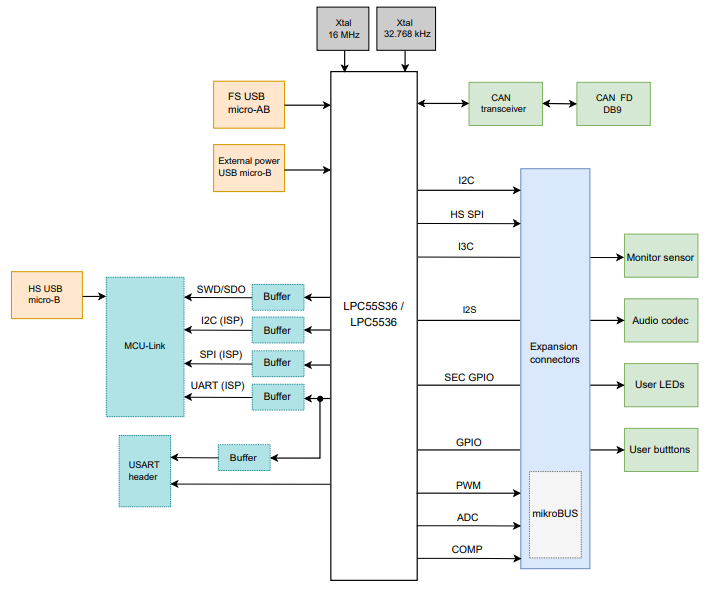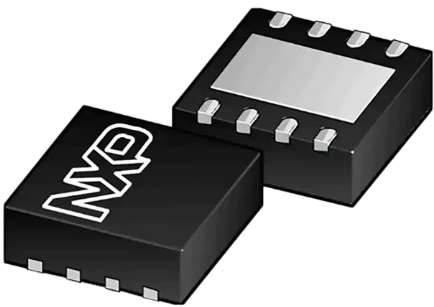NXP Driving Carbon Reduction, Energy Savings in Automotive Industry
The global automotive industry’s move toward electrification and intelligence is driving up demand further for chips, making the automotive market a battleground for semiconductor makers in recent years.
The global automotive industry’s move toward electrification and intelligence is driving up demand further for chips, making the automotive market a battleground for semiconductor makers in recent years. NXP Semiconductors, which has been focusing on enabling energy savings and carbon reduction, aims to leverage its technology innovations to help drive the automotive industry toward a sustainable world.
Traditional fuel vehicles emit about 2.2kg of carbon dioxide per liter of gasoline, which can be regarded as one of the major causes that have accelerated global warming. Because of this, many countries have set a schedule to ban the sale of fuel vehicles to slow down climate change. This has accelerated the entry of electric vehicles (EVs) into people’s lives. Market analyst TrendForce estimates that global shipments of new energy vehicles would reach 14.5 million units this year, and around 25 million units in 2025.
“One industry where we are seeing significant growth and opportunities is the automotive industry, which is undergoing a huge shift from internal combustion engines [ICE] to electrification,” says Elton Tsang, Senior Director, Global Sales for NXP Semiconductors in Taiwan. He points out that California, United States, has recently announced a ban on ICE vehicles, which will come into force in 2035. Meanwhile, the latest EY Mobility Consumer Index reports that China leads the world in the progress towards an EV future.
NXP’s EV power management technology enabling automotive industry transformation
The electrification of vehicles worldwide is very dependent on battery efficiency and battery management. The more precise the management, the higher the battery efficiency. Which is why the battery management system (BMS) plays a pivotal role in the process of vehicle electrification.
Tsang explains that the composition of the BMS includes ICs and sensors that control such key characteristics as voltage, temperature, and current. Apart from maximizing the battery’s power output, the BMS also balances its functions and help ensure its safe operation.
Two of the three major EV makers have used NXP’s BMS since 2021, while 16 of the top 20 car makers have already adopted the company’s battery system solutions. Such fruitful results have allowed NXP to be voted not only as this year’s “Featured Industry 4.0 MPU/MCU Supplier” but its dedicated high-performance MPU-S32R45 for 4D imaging radar has also received the Best Sensor Product of the Year award—both in the Taiwan and Asia categories—at EE Awards Asia 2022. Organized by AspenCore, the publisher of EE Times and EDN in Taiwan and Asia, EE Awards Asia, now on its second year, celebrates the innovation, creativity, and contributions of Asia’s engineering community that have made a difference in the way we work, live, and communicate over the past year.
Tsang says that automakers are currently facing many severe challenges, including laying the foundation for subsequent automotive innovations and integrating connectivity, safety, and electrification functions into future software-defined vehicles. OEMs must integrate at least hundreds of processors in vehicles and tap the valuable data generated by distributed electronic control units to cope with the rapid growth of vehicle software.
To achieve this goal, Tsang says automakers need to evolve to a platform-based architecture to ensure consistency across brands and different models, while making full use of software reuse to save high software development costs.
“This emerging OEM platform model requires automakers to achieve rapid integration of new functions, to secure over-the-air remote updates through scalable processor solutions, and to make significant progress in architecture in the final step,” explains Tsang.
Driving AI development with machine learning platforms and solutions
On top of automotive products, NXP has also won the Featured Influential Enterprise in Asia. Not only has NXP’s IW612 tri-band radio device, the first such invention in the industry, which supports Wi-Fi 6, Bluetooth 5.2, and 802.15.4 protocols, won the Best RF and Wireless IC of the Year Award in the Taiwan and Asia categories, but NXP’s eIQ machine learning (ML) platform and development environment has also won the Best AI Solution of the Year in Taiwan, clearly indicating that NXP is also deeply trusted by customers in the fields of secure connection technology and artificial intelligence (AI).
“AI-related applications require support in machine learning and run-time inference. This is the strength that NXP’s eIQ machine learning software development environment can provide!” Tsang says, highlighting the special features of the eIQ ML platform and development environment. He says as AI continues to stride forward, developers can use eIQ’s easy-to-use tools to train ML models for applications on the cores of neural processing unit (NPU) or central processing unit (CPU), and then deploy them on the microcontroller (MCU).
Taking NXP’s latest MCX with a new 32-bit Arm Cortex-M33 core built in a customized NPU as an example, Tsang says using the easy-to-use tools provided by eIQ to train ML models targeting NPU or CPU cores, the MCX series will offer secure boot constructed by NXP’s “security-by-design” methodology, with an immutable root-of-trust on chips and hardware-accelerated encryption, while specific series also provide built-in EdgeLock security subsystem to ensure hardware security.
On the heels of AI development is increasingly popular edge computing. As many new applications are constantly being added, the original MCU must process more and more data, and the terminals that need to be connected are becoming more and more complex. Tsang says improvements in the performance of MCUs is a must for the market, so NXP has recently launched the MCX series of products.
“Through the MCX series of products, AI can be introduced into low-power embedded devices and edge devices. When using NPU to perform machine learning operations, the speed can be increased by 30 times. If AI is imported from the cloud to the consumer and industrial IoT devices, it can effectively improve operational efficiency and meet more complex application requirements,” says Tsang.
Creating a sustainable world by through continuous technology innovations
Whether it is the development of technologies related to vehicle electrification, EVs, or AI, NXP’s ultimate goal is to fulfill its ESG mission. Winning several awards this time, the company becomes more confident in helping achieve a better, safer, and more sustainable world through innovation. Automakers and industry players will continue to play as the two major growth drivers for NXP, while the R&D of innovative technologies in related fields will still be the direction of NXP’s efforts.
Tsang says NXP expects to achieve a better, safer, more secure, and sustainable world through innovation. “We believe that this has aroused a strong resonance among all the industrial customers whom we are serving, and these customers are trying to deploy more reliable, more powerful, more energy-efficient emerging technologies that will outperform previous generations,” he notes.
In particular, all kinds of smart devices that are changing human life will have the opportunity to make a major contribution to environmental sustainability once they can branch out. Tsang says while these technologies save energy at the edge and increase performance, they can also bring the benefit of lower power consumption to more users. Considering that millions of devices are sold all over the world every quarter, even a small reduction in power consumption would reduce the need for the addition of power plants.
“If everyone becomes energy efficient, the whole world will change,” Tsang concludes.
在线留言询价
- 一周热料
- 紧缺物料秒杀
| 型号 | 品牌 | 询价 |
|---|---|---|
| RB751G-40T2R | ROHM Semiconductor | |
| CDZVT2R20B | ROHM Semiconductor | |
| TL431ACLPR | Texas Instruments | |
| MC33074DR2G | onsemi | |
| BD71847AMWV-E2 | ROHM Semiconductor |
| 型号 | 品牌 | 抢购 |
|---|---|---|
| BP3621 | ROHM Semiconductor | |
| ESR03EZPJ151 | ROHM Semiconductor | |
| IPZ40N04S5L4R8ATMA1 | Infineon Technologies | |
| STM32F429IGT6 | STMicroelectronics | |
| TPS63050YFFR | Texas Instruments | |
| BU33JA2MNVX-CTL | ROHM Semiconductor |
- 周排行榜
- 月排行榜
AMEYA360公众号二维码
识别二维码,即可关注


请输入下方图片中的验证码:



























